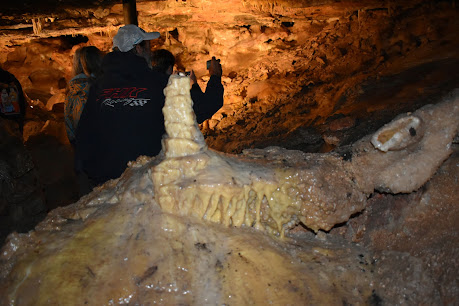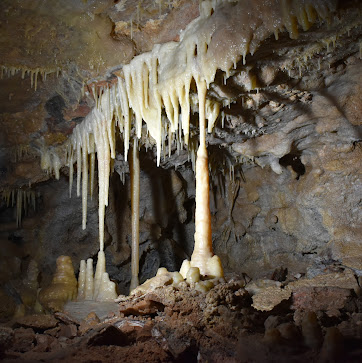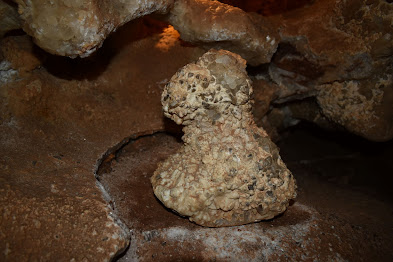Excitement never stops.

Remember that new sink faucet I installed, and the leaks I fixed, it lasted for a short while. Lets step back in this story. When I purchased the faucet, I knew I would need to do some adapting to the existing plumbing, this is an RV, not a house. I went down to the local ACE and worked with one of the "experts", and we came up with what looked like a working solution... so off to do the installation. All went well the first few days. Fortunately I was sitting in my chair when things went haywire. Initially I heard a pop, and thought something dropped in the sink, didn't think anymore about it. A little while later I wished I had checked out what that pop was, it was one of the water lines to the faucet breaking loose, and there was water all over the kitchen floor, under sink cabinet, and a river of water running from under the trailer. I turned off the water, vacuumed up the water, and investigated the crime scene. What I found was a part of the adapter connection was not tight enough and came off the incoming water line. I reconnected the line, and so far I'm up and working again.With that water problem came a second issue...
I don't how many of you know what this is, but it can hinder access to the trailer. This is suppose to be a single piece that opens the screen door. In my hurry to shut off the water, the screen door slammed shut and broke the handle. Fortunately there was enough of the little piece allowing me the opportunity to pry the door open. I removed the latch assembly until I can get a new one. New one installed.I said I was fortunate that the leak occurred while I was home. Before that leak I decided to drive to Sturgis and visit a cave near there.
It was a beautiful day to visit Wonderland Cave. This cave was a bit of a drive (two miles) off the main drag, up a dirt/gravel road.
The tour of the cave takes about an hour.The cave was discovered when the dog of a couple of brothers chased a rabbit into the cave back in the early 1900s. Tours began in the 1930s, and were far more demanding than the walk today. We've paid our admission, lets head to the cave.
This is just the start of the trail to the cave, its probably another 100 to 200 yards to the entrance of the cave.This was not the original entrance to the cavern, this was...
down this vent, via...
this block and tackle.Thanks to the CCC, a new opening was created, and stairs were added so that tours could be conducted in a safer manner. As we walk through the cave you will notice stacked stone, this is the CCC's doing as they were making the cavern more accessible.
SECTIONS OF THE ORIGINAL ACCESS
Today the path through the cavern can handle people as tall as six feet in most spots.
Lets start our journey into the underworld.These stairs are not part of the original CCC project, this would have been the original way in...Thank you to the folks that added the new stairs into the cavern. Continuing down the stairs visitors see Fern...Fern has been hanging around here for 40 years. You can also get popcorn on the tour...On the upper level visitors can touch whatever they like, but once we get to the lower level, its hands off because the lower level is a living environment. The tour guide does let visitors know what they can touch on the lower level.
ORIGINAL CCC STAIRS TO LOWER SECTION
This is one of the first areas cleared out by the CCC. While working in the cave they made a fire for light...and found a vent...Workers followed the smoke from the vent, and found it came out about a mile from the vent opening in the cave. It is believed that Alien Bob lives in the vent today.SEE ALIEN BOB?
BOB'S HOUSE
BOB'S PARTY ROOM
BACON/RIBBON STALAGTITE
BATMAN SIGNAL IN THE CAVE?
This flow is six feet thick and goes back 40 feet.
This next stone has a story to tell.LOVINGLY REFERRED TO AS "THE POODLE"
This particular mineral stone weighs in at 37 pounds. During a tour some years ago, a lady decided that it would look nice at her house, and stuck in her backpack when no one was looking.
A little back history on the cavern. The cavern and land around it are federal government property, under the supervision of the National Forestry Service, and leased out to the current owners. Anything removed from the cave, or touching the living portion of the cave, is a federal offense, and punishable by prison time.
Back to the poodle stone. The reason the "poodle" was discovered in the lady's pack pack was because she collapsed from the weight of the stone... this lady was 80 years old. No criminal charges were filed, technically she did not get out of the cave with it.
Unfortunately, or fortunately, the CCC was directed to stop their work in the cave, which was a disappointment to them. They were mad, as well as disappointed, leaving their equipment behind. The reasoning behind the work stoppage... if they continued, this would be an underground lake instead of a cavern.
THIS IS EMPTIED EVERY TWO WEEKS
BACK WHERE WE STARTED FROM
The day was young... since I showed up at the cave before it opened. I spoke to my trusty phone to find out what else there was to do in the area, and he told me there was a car museum in town. Off I went to find the SAAB Car Museum. The collection belongs to one guy and his wife, although she thinks he has too many cars. Tom thinks he only has about 100 cars, but the number is really higher than that. The other piece that is neat about the museum is his parts department. If a SAAB owner is having a problem getting parts, he probably has it. The other SAAB museum is in Sweden.
I was lucky enough to go through the museum with a couple that own several SAABs, and are friends with a couple of people featured in the museum for their contributions to SAAB technologies.
First off it is good to know what SAAB stands for: "Swedish Aeroplane Company". The guys that started the company were all airplane designers, and not a one of them had a drivers license. (https://www.saabmuseumusa.com)
The first car our guide directed us to was a SAAB that had been in several British RAC rallies, one of which was in 1960, won by Eric Carlsson. 1960-96 RALLY CAR
3 CYL, 2 STROKE, 850CC
If you look closely in the right photo, you can see that the water pump is attached to the generator, which was not done on other models.
After winning the 1960 road rally, the car was shipped to Canada to compete in another rally. After that rally the whereabouts of the car became fuzzy. A gentleman by the name of Eric Johnson found the car at an estate sale in Minnesota. He had relatives research the serial number with SAAB and found that it was the missing car.
During restoration the owner found a sticker on the dash indicating that it competed in the 1961 Hersey's Hill-Climb. Johnson verified that it had actually competed, and driven by Bob Sinclair. Apparently Bob's wife had family coming in town that weekend, so he checked the car out from the corporate office and ran the hill climb. Bob Sinclair later became president of SAAB USA.
QUICK NOTE: car models had numbers (i.e.: 1960-96) just like planes did, remember, these guys were airplane designers.
1983 900 FRICTION TESTER
Being SAABs were one of the only cars made by an aircraft company, it was only natural that they would come up with a vehicle for testing airport runway conditions. These "friction tester" cars, were used globally to test the "coefficient of friction" on runways.A fifth wheel and water tank were carried in the trunk area, and had an onboard computer. Water could be applied to the runway, and the computer would measure the breaking resistance, computing the coefficient of friction on the runway. The information obtained from the testing was radioed to the incoming pilots for their landing procedures. It also measures the build-up of rubber on the runway. We all have heard that screeching sound when the plane lands... rubber build-up on the runway makes it slippery. That excess rubber has to be removed. This particular car (#10) was used at Buffalo, NY airport.
At some point in the early 2000s, SAAB had financial problems, and was bought by General Motors.
2008-9-7X AERO
GM 6.0L, V8
This car is not just powered by a V8, its a Corvette LS2, 390 HP engine, in an Oldsmobile Bravada skin. SAAB upgraded the suspension, added better brakes and sound deadening glass. They also added one of their quirky ignition switches, which was installed between the seats.
2011-9-4X AERO AWD
2.6L, V6, TURBO
This car is a pretty rare creature. This SAAB SUV is rarer than the Ferrari F40, Porsche Carrera GT, and the Mercedes-Benz 300SL Gullwing. This car was one of 814 built in Mexico. Unfortunately the SAAB SUV never got off the ground. If you look close, you might see a glimpse of the Cadillac SRX platform, but it was "head and shoulders" above it SRX sister.
1996-900
2.0L, 4CYL, TURBO
This was the "next generation" SAAB. This particular car was shipped to the USA as a backup for the 2nd Talladega Long Run Challenge. It was not needed in the Long Run Challenge and was re-purposed by USA personnel the following year for the Pikes Peak Challenge. Driver Larry Webster finished second in the challenge. Larry was the editor for Road and Track magazine.
1987 9000
2.0L, 4CYL, TURBO
This car put in some time on the test track. This car, along with two others were shipped from Sweden to Talladega Speedway for performance testing. Each car was driven at an average speed of 132 MPH, for 60,000 miles, non-stop. The only time the cars were on break was to change out drivers, which was done ever two hours. These guys did the "long run challenge".
1986 FORMULA FORD PRO-SERIES RACE CAR
SAAB 2000 TURBO
This is one of the race cars that ran in the Skip Barber Pro Series, from the mid 1980s to the mid 1990s. They ran the SAAB 2000 Turbo for 10 of the 11 years the series was happening. The major reason for using the SAAB engine... reliability, they only need to change the engines out once every three years. Usually a race car engine gets replaced after each race, or if lucky, makes it to the end of the racing season. This car was driven by David Andahl, a Representative for the state of North Dakota.
1956 SAAB SONETT SUPER SPORT
3 CYL, INLINE 2 STROKE, 748CC
This was SAAB's first attempt at a pure sports cars. This race car only weighed 1,100 pounds.
By 1970 SAAB was up to the Sonett III.1970 SONETT III
V4, 1500CC
The difference between the first Sonetts and this one... no more "fliphood", and new styling, and had a Ford motor. 1970 saw only 500 cars produced, and there are a few in existence today. The car was produced for the USA, but the road salts caused the cars to deteriorate. There are a few still around outside of the USA.
Lets jump back in time and look at some of their first cars.1950-92
2 CYL, 2 STROKE, 764CC, 25HP
1950 marked the beginning of SAAB's car production. SAAB marketed this car globally, in a multitude of color choices... as long as your choice was this green, which was leftover Swedish Army Green (Svenska Armen Gron). You might also notice that there was no water pump, the cooling system was "thermo-syphon". Travelers could sleep in this car, all they needed to do was lower the back seat and climb in through the trunk. SAAB did come up with a different method later, and we will see it.
1952-92
2 CYL, 2 STROKE, 764CC
ITS EARLY DAYS, READY FOR A ROAD RALLY
Tom attended the 2005 SAAB owner convention in this picture, and you can see the love that he puts into restoring his vehicles.
This next one was not designed for the USA, but Tom and Patti got it here.1956-92B
2CYL, 2STROKE, 764CC
Looks a lot different than the first five years, right...not. The difference with the Swedish model, it put out 27 HP. I guess they thought the Swedes could handle more horsepower than Americans.
"PUSH ME-PULL YOU"
This is a joke car. The engine is in the left side, and supposedly there is a trailer for this car to pull, but Tom doesn't have it. They are guessing that the car would be separated where the grey tape is.
2005-9-2X AERO
2.0L, 4CYL TURBO
Nice looking SAAB, however, it was lovingly called a Saabaru. You see, GM got this bright idea of having Subaru build this on the WRX platform, and put a SAAB badge on it. This vehicle only has 15,000 miles on it, and is believed to be a "pre-production" model, in which there were only three made, having VINs 1335, 1336, and 1337. This car holds the VIN 1335, making it the very first one ever produced.
1972-99
INLINE 4 CYL
This beautiful purple SAAB has a story to tell. Back in the day in 1972 this car was purchased by a newlywed couple. As time went on, so did the couple. In 2022 a couple was visiting the museum, and the husband broke down, why... they were looking at their first car... here in a museum.
This car was one of the "semi-station wagon" style, the back seat folded down for sleeping.
1966-95 SPECIAL
3 CYL, 2 STROKE, 850CC
You are looking at an actual station wagon that allowed sleeping, with access from a nice swing up door, instead of climbing through a trunk opening. Did that make it "special"... no. What made it "special" was oil injection on the 2 stroke engine and front disc brakes. Tom didn't purchase this car until the late 1990s, and what a journey it was. He and his son started for Colorado in their Aerostar van. As they came to a pass nearing Vail, they named the pass "Vail Hell"... the van almost didn't make over the pass. Anyway, they got the car home, and it has been repainted, and the engine and transmission rebuilt.

You may be asking why I am showing you the rear window of one of the Sonetts. This is your child's college fund... $10,000, if one can be found.
1968 SAAB-O CAMPER
520 LBS
Of course in Sweden this would be called a caravan. The trailer was designed to be towed behind a small car. The body of this trailer only weighs 176 pounds. When the caravan was being designed it was trying to meet Swedish regulations for caravans, which favored very lightweight vans. The length of this caravan (w/o the hitch) is 9 feet long, 6 feet wide, 7 feet tall, with interior headroom of 5 feet, 9 inches. That means that I would have a problem standing up straight in it. In 1963 when the caravan was launched, the cost was approximately $850 US. About 400 caravans were manufactured, and there are still 30 registered in Sweden today. SAAB discontinued the project in 1968, and you are looking at one of those 1968 caravans.
1950 SAAB DINGY
In 1947 SAAB announced it was going to add a 3rd element to it line... boats. They were going to produce a utility boat that could seat 7-8 people, and a dingy that could seat up to 3 people. The attempt to increase manufacturing and employees was not successful. They only produced 250 boats, of which 150 were dingys. The last SAAB boat sold was in 1948.
Their motors have come a long way since the 50's.
There is so much more to see here. This museum was a surprise gem, and I'm glad I stopped.
My guide suggested one more stop on the day, Bear Butte. Unfortunately when you do something on the spur of the moment, one has to live with the consequences, and in my case, the learning center being closed.
The story of the butte is one of a sacred place for the Cheyenne and Sioux nations.
I was not prepared for the hike this day. The Indians walked the path to the top, and on their way they would leave cloth, or packets tied to the trees. These articles represented gifts to the ancestors. On the walk visitors are asked to not touch theses items, as they are considered sacred. The round trip hike is about four miles, and I only went half way. This hike I would classify as a moderate hike. Next time I try I will have water and my walking stick.
You can see the trail in the bottom photo. On my next hike, which will be to the top, I will have more pictures. Back home we go to an aged ribeye steak.
If you thought I just jetted around the region, you are partially correct; I also play in the kitchen too.
HOMEADE COTTAGE CHEESE
PORK BELLY BURNT ENDS
HOMEADE SAUERKRAUT
CHICKEN JERKY
COTTAGE CHEESE FUDGE BROWNIES
I was a bit surprised with the brownies, they don't have a cottage cheese taste, probably because of the other added ingredients: almond flour, eggs, cocoa, and melted chocolate.
Next week will be a full week with appointments, cave tour, and a hike.















































































No comments:
Post a Comment